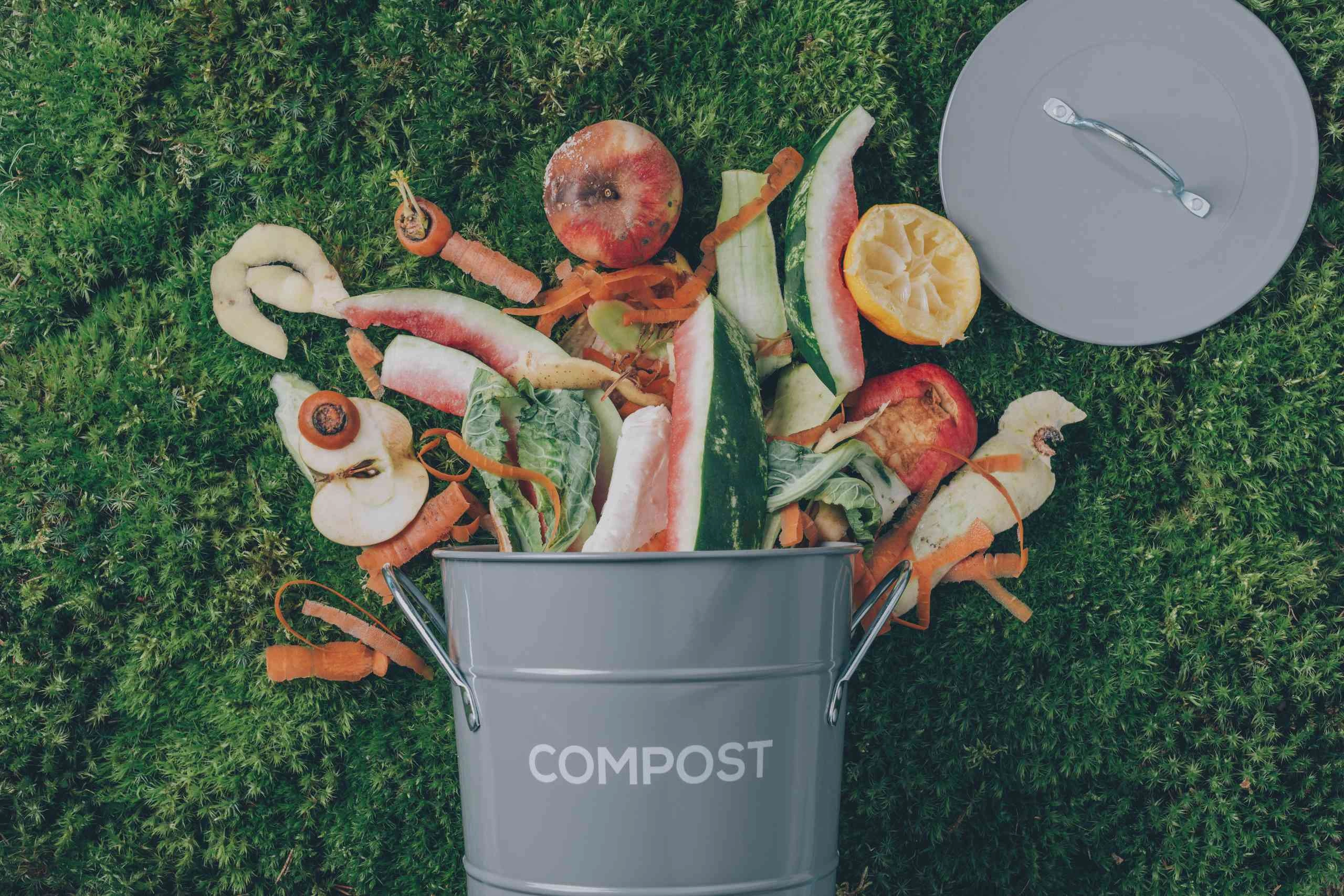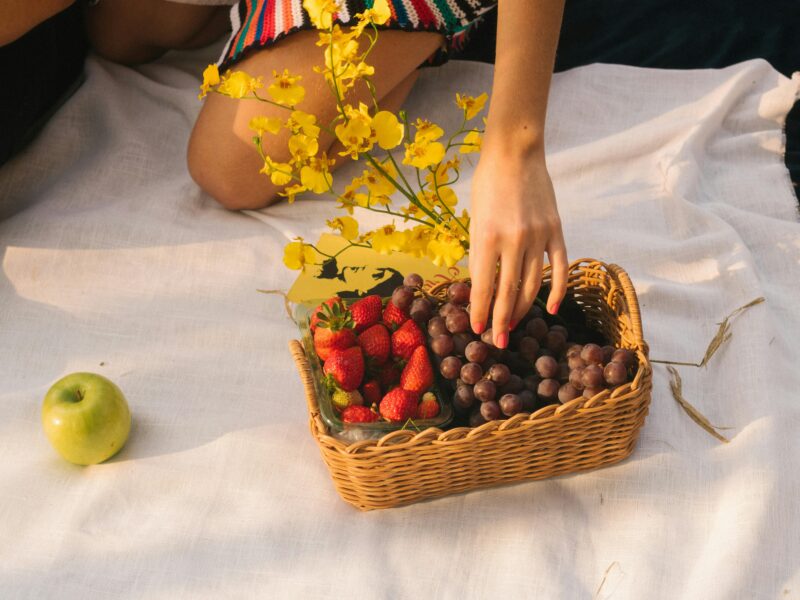Composting is one of the most effective ways to reduce household waste, improve your garden’s soil, and contribute to a healthier environment. By turning your kitchen scraps and yard waste into nutrient-rich compost, you can create what’s often referred to as “black gold” for your garden—a natural fertilizer that improves soil structure, enhances plant growth, and reduces the need for chemical fertilizers. If you’re new to composting and want to get started, this guide will walk you through the process of setting up your own compost bin, from choosing the right type to managing the composting process.
1. Why Composting Matters: Benefits for Your Garden and the Environment
Before diving into the how-to, it’s worth understanding why composting is such a valuable practice. Here are some of the key benefits:
Environmental Benefits:
- Reduces Landfill Waste: A significant portion of household waste consists of organic materials like food scraps and yard waste. By composting, you divert these materials from landfills, where they would otherwise produce methane, a potent greenhouse gas.
- Conserves Resources: Composting reduces the need for synthetic fertilizers, which require significant energy to produce and can contribute to soil degradation over time. It also conserves water by improving soil’s water-holding capacity.
- Supports Soil Health: Compost is rich in organic matter, which improves soil structure, increases nutrient content, and fosters beneficial microbial activity. Healthy soil is more resilient to erosion, pests, and diseases.
Garden Benefits:
- Improves Soil Structure: Compost adds humus to the soil, improving its texture and helping it retain moisture while still allowing for proper drainage. This is particularly beneficial for heavy clay soils or sandy soils that drain too quickly.
- Provides Nutrients: Compost is a slow-release fertilizer, meaning it gradually releases nutrients into the soil as plants need them. This helps maintain a steady supply of essential nutrients like nitrogen, phosphorus, and potassium.
- Encourages Healthy Plant Growth: Plants grown in compost-enriched soil are often more robust, with stronger root systems, better disease resistance, and increased yields.
Pro Tip: Composting is also a great way to teach children about the natural recycling process and the importance of sustainability.
2. Choosing the Right Compost Bin: Options for Every Space
The first step in starting your composting journey is choosing the right compost bin. There are several types of compost bins available, each with its own advantages depending on your space, budget, and composting needs.
Types of Compost Bins:
- Open Compost Pile: If you have a large backyard and plenty of space, an open compost pile is the simplest option. You can start a pile directly on the ground, allowing for natural aeration and easy access for turning the compost. However, open piles may attract pests and can be more challenging to manage.
- Compost Tumbler: A compost tumbler is an enclosed bin mounted on a frame that allows you to turn the compost easily by rotating the drum. Tumblers are great for faster composting and are ideal for small spaces. They’re also less likely to attract pests, as they’re fully enclosed.
- DIY Compost Bin: For a budget-friendly option, consider building your own compost bin using materials like wooden pallets, wire mesh, or plastic storage bins. DIY bins can be customized to fit your space and are a great project for those who enjoy hands-on work.
- Vermicomposting Bin: Vermicomposting involves using worms to break down organic matter. This method is perfect for indoor composting or for those with limited outdoor space. Vermicomposting bins are usually small, odor-free, and produce a nutrient-rich compost known as worm castings.
Pro Tip: When choosing a compost bin, consider how much waste you generate and how quickly you want to produce compost. Tumblers and vermicomposting bins generally produce compost faster than traditional piles or bins.
3. What to Compost: Knowing Your Greens and Browns
Successful composting relies on maintaining the right balance of carbon-rich materials (“browns”) and nitrogen-rich materials (“greens”). Understanding what to compost—and what to avoid—will help you create a healthy, balanced compost pile.
Greens (Nitrogen-Rich Materials):
- Fruit and Vegetable Scraps: Peels, cores, and leftover bits from fruits and vegetables are excellent for composting.
- Coffee Grounds and Filters: Coffee grounds add nitrogen to the compost pile, and paper filters can also be composted.
- Tea Bags and Leaves: Most tea bags are compostable, but check to ensure they don’t contain synthetic materials.
- Grass Clippings: Fresh grass clippings are high in nitrogen and break down quickly.
- Eggshells: Crushed eggshells add calcium to the compost and help balance the pH level.
Browns (Carbon-Rich Materials):
- Dried Leaves: Fallen leaves are a great source of carbon and help aerate the compost pile.
- Straw and Hay: These materials break down slowly and add bulk to the compost.
- Cardboard and Paper: Shredded cardboard, newspaper, and paper towels can be composted as long as they’re free of inks, coatings, and adhesives.
- Wood Chips and Sawdust: These materials are slow to break down but provide carbon and structure to the pile.
- Twigs and Small Branches: Adding small amounts of woody material helps with aeration and provides a slow-release carbon source.
What Not to Compost:
- Meat, Dairy, and Fats: These materials can attract pests and produce unpleasant odors as they decompose.
- Diseased Plants: Avoid composting plants that are diseased, as the pathogens may survive the composting process and spread to your garden.
- Weeds with Seeds: Weeds that have gone to seed can spread unwanted plants throughout your garden if the compost doesn’t reach a high enough temperature to kill the seeds.
- Pet Waste: Waste from meat-eating animals (cats and dogs) can carry harmful pathogens and should not be composted.
Pro Tip: To achieve the best results, aim for a ratio of about 3 parts browns to 1 part greens. Layering these materials helps maintain balance and prevents odors.
4. Managing Your Compost Bin: Turning, Watering, and Troubleshooting
Once your compost bin is set up and filled with the right materials, the real work begins. Managing your compost bin properly ensures that your compost breaks down efficiently and produces a high-quality end product.
Turning the Compost:
- Aeration is Key: Composting is an aerobic process, meaning it requires oxygen to break down materials. Regularly turning your compost—about once a week—introduces air into the pile and speeds up decomposition.
- Use a Pitchfork or Aerator: If you have an open compost pile or bin, use a pitchfork or compost aerator tool to turn the pile. For compost tumblers, simply rotate the drum according to the manufacturer’s instructions.
Watering the Compost:
- Keep It Moist, Not Soggy: Compost should be about as damp as a wrung-out sponge. If it’s too dry, decomposition slows down; if it’s too wet, it can become anaerobic and smelly.
- Check Moisture Levels: During dry spells, you may need to add water to your compost pile. If it’s too wet, add more browns like dried leaves or cardboard to absorb excess moisture.
Troubleshooting Common Problems:
- Odor Issues: If your compost pile smells bad, it’s likely too wet or contains too many greens. Add more browns and turn the pile to improve aeration.
- Slow Decomposition: If your compost isn’t breaking down, it may need more nitrogen-rich greens or better aeration. Add more greens, turn the pile, and ensure it’s moist.
- Pest Problems: If pests are attracted to your compost, avoid adding meat, dairy, or fatty foods. Use a securely lidded bin or tumbler to keep pests out.
Pro Tip: Composting is a slow process, typically taking several months to a year to produce finished compost. Be patient, and don’t hesitate to experiment with different methods to find what works best for you.
5. Harvesting and Using Your Compost: Reap the Benefits
After months of careful composting, your compost is ready to use when it’s dark, crumbly, and earthy-smelling. Harvesting your compost is the final step in the process, and it’s time to put that “black gold” to work in your garden.
How to Harvest Compost:
- Check for Readiness: Finished compost should be dark brown or black, crumbly, and smell like fresh earth. If you still see recognizable pieces of material, give it more time to decompose.
- Separate Unfinished Material: If you have partially decomposed materials, sift them out and return them to the compost bin to finish breaking down.
- Harvest and Store: Use a shovel or garden fork to remove finished compost from the bottom of your bin. Store it in a covered container or pile until you’re ready to use it.
Using Compost in Your Garden:
- Amend Soil: Mix compost into garden beds to improve soil structure, fertility, and moisture retention. It’s particularly beneficial for vegetable gardens and flower beds.
- Top Dressing: Apply a layer of compost around the base of plants as a nutrient-rich mulch. This helps suppress weeds, retain moisture, and feed your plants.
- Potting Mix: Blend compost with potting soil to create a nutrient-rich medium for container gardening. Use about one-third compost to two-thirds potting soil.
Pro Tip: Compost can also be used to make “compost tea”—a liquid fertilizer made by steeping compost in water. Compost tea is a gentle, nutrient-rich solution that can be used to water plants and boost their growth.
Starting a compost bin is a simple and rewarding way to reduce waste, improve your garden, and contribute to a healthier environment. By following the steps outlined in this guide, you can turn kitchen scraps and yard waste into nutrient-rich compost that benefits both your plants and the planet.
Composting is more than just a gardening practice; it’s a commitment to sustainability and a way to give back to the earth. Whether you’re a seasoned gardener or just starting, composting is an easy and effective way to make your garden greener and more eco-friendly.
So, gather your kitchen scraps, choose the right compost bin, and start your composting journey today. With patience, care, and a little bit of effort, you’ll soon be reaping the rewards of your very own garden gold.
Happy composting!


